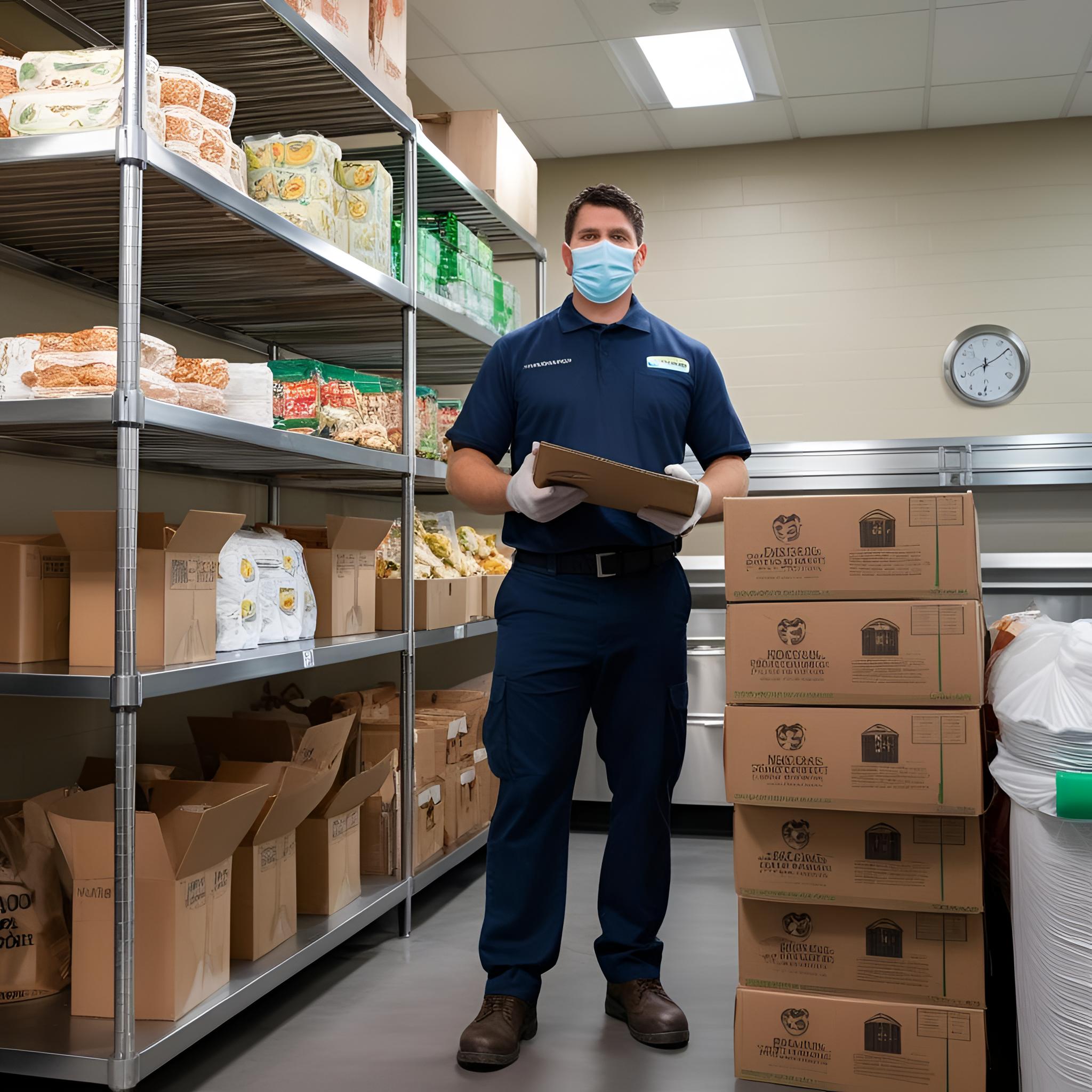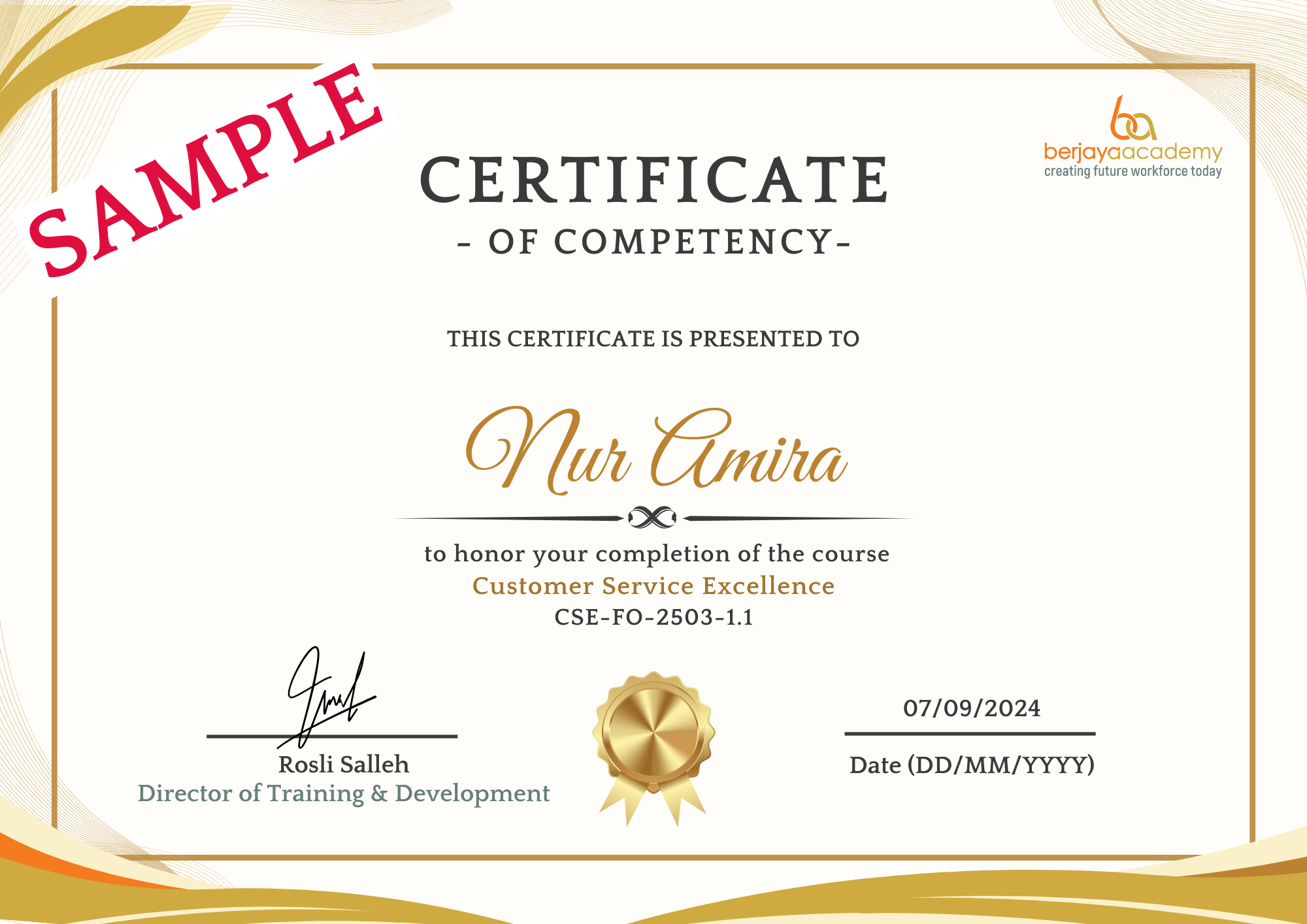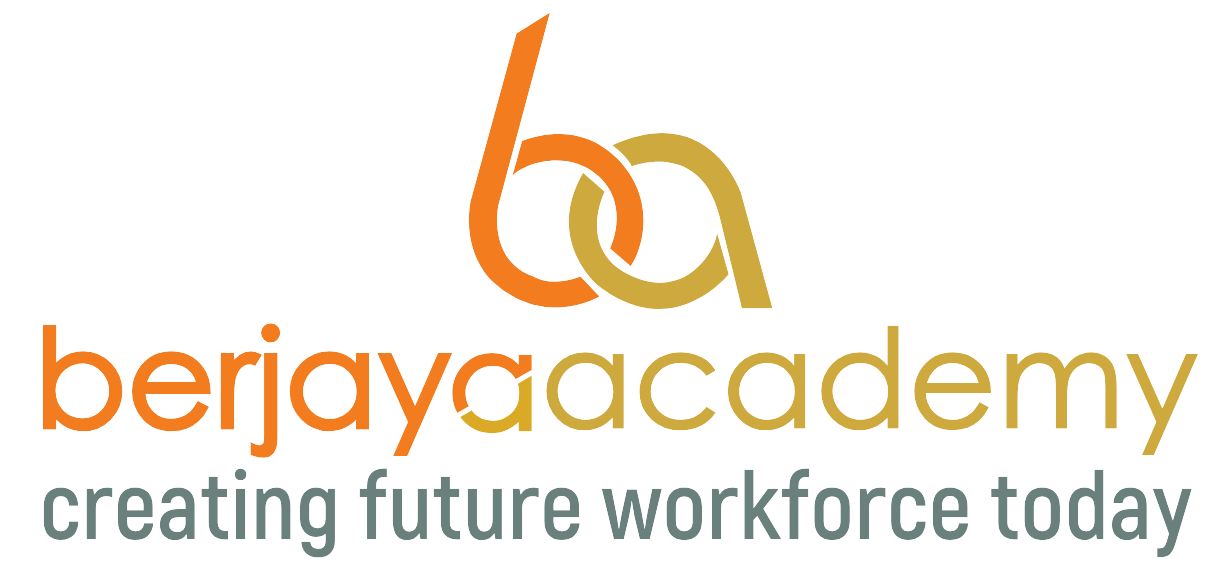
Course Details
Course Title: Food Delivery and Supply Chain Security
Course Code: FDSCS-FB-2503-1.1
Course Accreditation
Accreditation Type: Certificate of Competency
Course Duration
Total Course Hours: 8 hours (1 day)
Course Fee
Total Course Fee: S$180/pax
Funding Available (If Applicable):
- Training Industry Professionals in Tourism (TIP-iT)
- NTUC Company Training Committee (CTC) Grant
Summary
Topics:
- Inspecting deliveries for tampering or contamination.
- Inspecting deliveries for tampering or contamination.
- Maintaining secure storage areas for supplies.
- Vetting suppliers for compliance with food safety standards.
Safety and Security Aspect:
- Protects the integrity of food and beverages served.


Learning Objectives and Learning Units for Food Delivery and Supply Chain Security
Learning Objectives:
By the end of this course, learners will be able to:
- Effectively inspect food deliveries for signs of tampering or contamination, ensuring food safety.
- Maintain secure storage areas for food and beverage supplies to prevent contamination or theft.
- Vet suppliers to ensure compliance with food safety standards and the security of the supply chain.
Learning Units:
Unit 1: Inspecting Deliveries for Tampering or Contamination
- Overview of common risks in food deliveries (e.g., tampering, contamination, spoilage)
- Techniques for visually inspecting food deliveries for signs of tampering or damage
- How to handle and report suspected contamination or damage
- Identifying expired or improperly stored items during delivery inspection
- Importance of checking the condition of packaging and seals on food products
- Temperature control: ensuring deliveries are within safe temperature ranges
- Record-keeping and documentation of deliveries for traceability
Unit 2: Maintaining Secure Storage Areas for Supplies
- Best practices for storing perishable and non-perishable food items
- Organizing storage areas to prevent cross-contamination (e.g., raw vs. cooked foods)
- Securing storage areas to prevent unauthorized access and theft
- Maintaining proper temperature and humidity levels in storage environments
- Identifying and mitigating risks in storage areas (e.g., pests, mold, moisture)
- Regular inspection and inventory control to ensure food safety and security
- Protocols for rotating stock (First In, First Out – FIFO)
Unit 3: Vetting Suppliers for Compliance with Food Safety Standards
- Importance of supplier vetting for food safety and security
- Key food safety regulations and standards (e.g., HACCP, FDA regulations, local guidelines)
- How to assess and evaluate potential suppliers for food safety practices
- Conducting background checks and ensuring suppliers meet hygiene and safety standards
- Regular auditing of suppliers for ongoing compliance
- Establishing strong communication channels with suppliers to ensure food safety integrity
- Documentation and certification of supplier compliance
